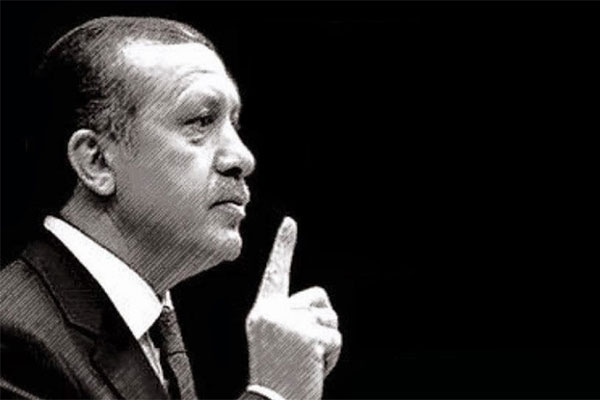There have been two important changes in governance in recent years with important consequences. First, the move to the current executive presidential regime in 2018 officially crowned the president as the dominant authority in every sphere of policy.
Second, the independence of the country’s central bank, granted as part of a series of economic reforms in the early 2000s before Erdogan’s AKP came to power, is now also gone.
There have been four central bank governors in less than three years, with a clear pattern of dismissals closely following interest rate hikes. The most recent appointment was Şahap Kavcıoğlu in March, and interest rates have not risen since then.
Compounding factors
The lira has now lost nearly 40% of its value since the beginning of the year. This is a massive depreciation for any economy, and even worse for Turkey for various reasons.
For one thing, the fall in the lira will soon show up in a rise in inflation, which is already hovering around 20% even by official accounts. The fact that so much of the economy runs on US dollars does not help.
Existing estimates suggest that a 10% depreciation in the lira against the US dollar results in around a two percentage point rise in inflation. Given that inflation has only risen by about one percentage point since the summer, that suggests it has a long way to go yet.
About 70% of Turkey’s imports are made up of raw materials and goods used in manufacturing, so that’s where much of the effects will be felt. Among the difficulties is that Turkey has to import most of its energy.
Another issue is that a significant proportion of Turkey’s debts are in foreign currencies – mainly US dollars and euros. The weaker lira makes these debts much more difficult to service, and Turkey is due to pay $168 billion of its external debts in the next 12 months.
The increased risk of default could inflict serious losses on foreign investors, with certain Spanish and Italian banks among those that are heavily exposed. This raises the prospect of Turkey’s problems spilling over into other countries, and the sell-off in the lira is likely to get worse if market panic becomes prolonged because of variant B.1.1.529.
What can policymakers do?
There are three policy tools available to policymakers in the face of currency turmoil: raising interest rates, selling foreign exchange reserves and imposing capital controls (meaning you prevent foreign currency from leaving the country).
All three aim to take the pressure off the domestic currency. Raising interest rates makes the domestic currency more attractive to investors since it increases what they can earn from it.
Selling foreign exchange reserves means buying more of the domestic currency, so its value is strengthened by the extra demand. And capital controls slow down the volume of trade between the domestic and foreign currency, which means fewer people are selling the domestic currency.
Apart from the fact that the regime in Turkey is not enthusiastic about raising interest rates, it can’t sell foreign reserves because it essentially doesn’t have any. That leaves capital controls, which would be an extreme measure in today’s world and would imply that Turkey was withdrawing from the international financial system.
Capital controls are also difficult and costly to enforce, even in countries with robust institutions.
Perhaps instead the central bank will reverse policy and raise interest rates. This already happened during the 2018 currency crisis, when the authorities made a major U-turn and raised interest rates by 6.25 percentage points that September.
At that time the lira had plummeted to close to $6.50 – still much more valuable than it is today – before strengthening to the low $5.00s after the change of policy. Similarly, in 2020 a rate-cutting streak was followed by sharp rate-rises later in the year.
Yet, as necessary as it is for Turkey to increase interest rates, this will not do much to solve the significant imbalances in the economy that have accumulated over a long period.
What Turkey needs is a carefully designed and inclusive stabilization program with buy-in from large sections of society, with independence for the central bank at its core. This is highly unlikely to happen with the current all-powerful presidential regime, with or without a change in power.
Gulcin Ozkan, Professor of Finance, King’s College London
Here is the original article.
